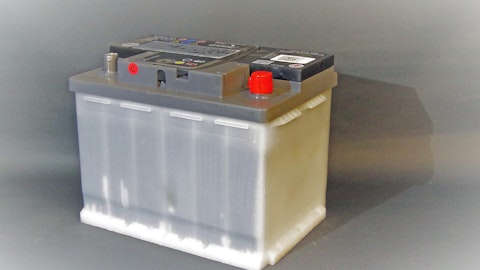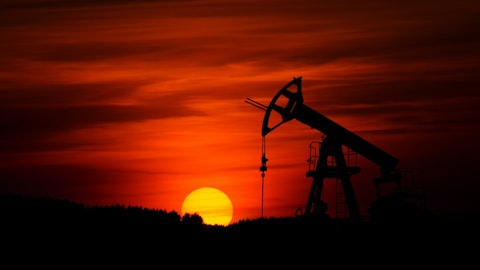The output of that ionic clay is your waste, your overburdened under burden using our technologies that we have within ReElement to extract out those metals, produce a concentrate, and then feed them into ReElement to refine. Now, if they go through all those steps and they can do it profitably, then we would happily accept it at ReElement to refine it because they don’t have that technology, nor does anybody else, we do. So we hope they do, we hope they progress with that. But I think it is challenging as a standalone. Maybe they have byproducts that they are focusing on there and that’d be great. But everybody, all the coal companies, if you test their eye on a clays within the coal seeds, they probably have some components of rare earth in them and or lithium in them, which we have done, which we do have.
But you got to, you got to figure out how a way to make money doing it, and that is the most important thing, and do it in a cost structure that your customers can pay for it.
Keith Goodman: Got you. Got you. And then lastly, I guess going back to lifecycle for a second, if they are shutting down the construction of the second part, which I guess is the processing part, they must have had relationships with some companies who I guess were under the assumption that they were going to be getting some of these rare critical elements that are processed as a from lifecycle. I imagine that would be a logical potential customer for you.
Mark LaVerghetta: Yes. I mean, we believe, so. We talk about refining, ReElement is a refining company. When you talk about recycling, those are shredding companies. Most of the people that you hear about in the United States that they say are the biggest battery recyclers, they are shredders. They shred material, they produce black mass and they sell it to China. That is what is done today in the United States, by the way. That is going to change here shortly, in my opinion. And I think Congress is going to open up to that and start saying, why are we shipping all this black mass and shredded batteries back to China? That is got to stop. And it slowly is, and we are seeing quite a bit of black mass come through our facilities now from these recycling companies that are testing that we are able to test with and develop partnerships with.
And we are excited about that. And we are excited about what the recyclers are doing. They are doing a lot of aggregation and they are doing a lot of shredding of batteries. And now we can refine that for them. What Lifecycle was trying to do is create a hub and spoke model. They were trying to create these battery shredding operations throughout the country, and then they were going to build one hub up in Rochester to process it. Well it is proof is in the pudding. Solvent extraction doesn’t work in the United States. It is too costly to build and it doesn’t make money. And you can’t match your CapEx with your feedstock availability and or scale it over time once you build it is what it is. Our technology at Real Element is highly modular and highly scalable.
And yes, we are super excited about working with all of the recycling companies throughout the United States and throughout the world to help fulfill that supply chain gap that everybody’s missing. Everybody’s missing the ability to refine lithium, to refine critical minerals, to refine, rare earth elements outside of China. And we can do that today and we can scale that rapidly today. And because of that, we are getting a huge amount of interest from these parties to work with them. Now would we be interested in the life cycle assets, and will we be involved in that process? For sure. Under American Metals line, which is where we would shred the batteries at, and we have developed that model to do so. But, ReElement is that missing gap.
It is replacing that solvent which can’t be done in the United States. And our facilities are operating, proven can operate under environmental standards and proven we can scale it rapidly, not only domestically but also internationally.
Keith Goodman: Okay. Appreciate it. I really appreciate it. I think a good job of explaining it. Thanks a lot.
Operator: We will take our next question from Mike Niehuser with Roth MKM. Your line is open.
Mike Niehuser: Just real quick, I know we are running late here. But I noticed that it said that you would commenced development at your Wyoming County and that you are realizing the first development. I take that as you are almost in the early throes of production and you are going to be commissioning them for the next couple quarters now? Is that close?
Mark LaVerghetta: So we started the initial development of the face ups. And in that, the nice thing about deep mine face ups is you actually will produce coal in that process, and be able to monetize it. And so we are working on the Eagle team as we speak right now to develop that, with the goal of over the next few quarters to commence production there. In the meantime, we will be able to generate revenues from the facility as we are expanding it, as we are developing it. So it is an exciting development. The quality there is mid-vol met coal, highest quality you can produce in the country. And the beauty of it is they are – Greenfield operations so that the cost structure we are going to be significantly lower than our competition.
Mike Niehuser: Are you stockpiling there now or are you actually putting it through a facility?



